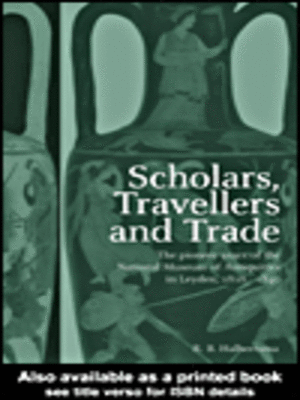Scholars, Travellers and Trade
ebook ∣ The Pioneer Years of the National Museum of Antiquities in Leiden, 1818-1840
By R. B. Halbertsma

Sign up to save your library
With an OverDrive account, you can save your favorite libraries for at-a-glance information about availability. Find out more about OverDrive accounts.
Find this title in Libby, the library reading app by OverDrive.



Search for a digital library with this title
Title found at these libraries:
| Library Name | Distance |
|---|---|
| Loading... |
Today, the National Museum of Antiquities in Leiden is internationally known for its outstanding archaeological collections. Yet its origins lie in an insignificant assortment of artefacts used for study by Leiden University. How did this transformation come about?
Ruurd Halbertsma has delved into the archives to show that the appointment of Caspar Reuvens as Professor of Archaeology in 1818 was the crucial turning point. He tells the dramatic story of Reuvens' struggle to establish the museum, with battles against rival scholars, red tape and the Dutch attitude of neglect towards archaeological monuments. It was Reuvens who trained archaeological agents to investigate and excavate ancient sites, and bring back the antiquities on which the museum's importance rests. Yet such striking individual achievement was not necessarily without its costs; the book asks if Reuvens' policy of collecting was actually cultural looting under another name.
This book throws new light on the process of creating a national museum, and the difficulties of convincing society of the value of the past.
Ruurd Halbertsma has delved into the archives to show that the appointment of Caspar Reuvens as Professor of Archaeology in 1818 was the crucial turning point. He tells the dramatic story of Reuvens' struggle to establish the museum, with battles against rival scholars, red tape and the Dutch attitude of neglect towards archaeological monuments. It was Reuvens who trained archaeological agents to investigate and excavate ancient sites, and bring back the antiquities on which the museum's importance rests. Yet such striking individual achievement was not necessarily without its costs; the book asks if Reuvens' policy of collecting was actually cultural looting under another name.
This book throws new light on the process of creating a national museum, and the difficulties of convincing society of the value of the past.







